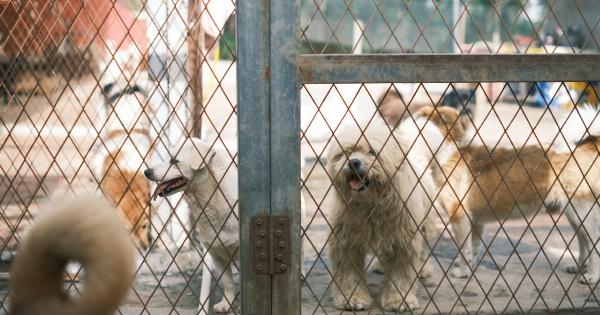Speaking Dog: A Comprehensive Guide.
Understanding Dog Communication
Dogs are highly social animals and communicate with one another using a variety of cues, including body language, vocalizations, and facial expressions. Understanding these forms of communication is crucial for any dog owner or enthusiast.
Body Language
Dog body language is one of the primary ways dogs communicate with each other and with humans. Some common body language cues include:.
- Tail position: A wagging tail often indicates happiness, while a tucked tail signifies fear or submission.
- Ear position: Ears held erect suggest alertness, while flattened ears suggest fear or aggression.
- Eye contact: Direct eye contact can be seen as a challenge or a sign of aggression among dogs.
- Posture: A relaxed, loose posture indicates a friendly and non-threatening demeanor, while a tense or stiff posture may indicate fear or aggression.
Vocalizations
Dogs also use vocalizations to communicate their needs, emotions, and intentions. Some common forms of dog vocalizations include:.
- Barking: Dogs bark for various reasons, including to alert their owners, express excitement, or indicate fear or aggression.
- Howling: Howling is often associated with communication over long distances or in response to high-pitched sounds.
- Whining: Whining is typically a sign of distress or a request for attention.
- Growling: Growling can be a warning sign and indicates a dog’s discomfort or aggression.
Understanding Facial Expressions
Just like humans, dogs also use facial expressions to convey their emotions and intentions. Some common facial expressions in dogs include:.
- Smiling: A relaxed, open mouth with a slightly upturned lip can be interpreted as a smile and indicates friendliness.
- Bared teeth: Bared teeth are a clear sign of aggression or threat and indicate that a dog is ready to attack.
- Yawning: Dogs often yawn when they are stressed or anxious. It can also indicate fatigue or a need to relax.
- Raised eyebrows: Raised eyebrows can show surprise or curiosity in dogs.
Training Dogs to Speak
While dogs cannot speak human languages, it is possible to train them to respond to specific verbal cues or commands. Teaching your dog to speak on command can be a fun and entertaining trick.
Step-by-Step Guide to Teach Your Dog to Speak
Follow these steps to train your dog to speak:.
- Choose a cue: Decide on a specific word or phrase you want your dog to associate with the “speak” command.
- Associate the cue with barking: Whenever your dog naturally barks, say the cue word and reward them with a treat or praise.
- Repeat and reinforce: Practice this association regularly, repeating the cue word and rewarding your dog for barking.
- Add a visual cue: Once your dog starts to understand the association, add a visual cue, such as pointing or holding up your hand, to prompt them to bark.
- Generalize the command: Practice the “speak” command in various environments and gradually fade out the need for a visual prompt.
Common Challenges in Teaching Dogs to Speak
While some dogs may quickly pick up the “speak” command, others may face certain challenges during the training process. Some common challenges include:.
- Quiet dogs: Some dogs may naturally be less vocal, making it challenging to teach them to bark on command.
- Excessive barking: On the other hand, dogs with a tendency to bark excessively may have difficulty learning when to bark and when to remain quiet.
- Distractions: Training in a noisy or distracting environment can make it harder for dogs to focus and understand the command.
Conclusion
Understanding dog communication, including body language, vocalizations, and facial expressions, is essential for any dog owner or enthusiast. While dogs cannot speak human languages, they have their unique ways of expressing their needs and emotions.
Teaching your dog to respond to verbal cues, such as barking on command, can be a fun and stimulating activity that strengthens the bond between you and your furry friend.



























